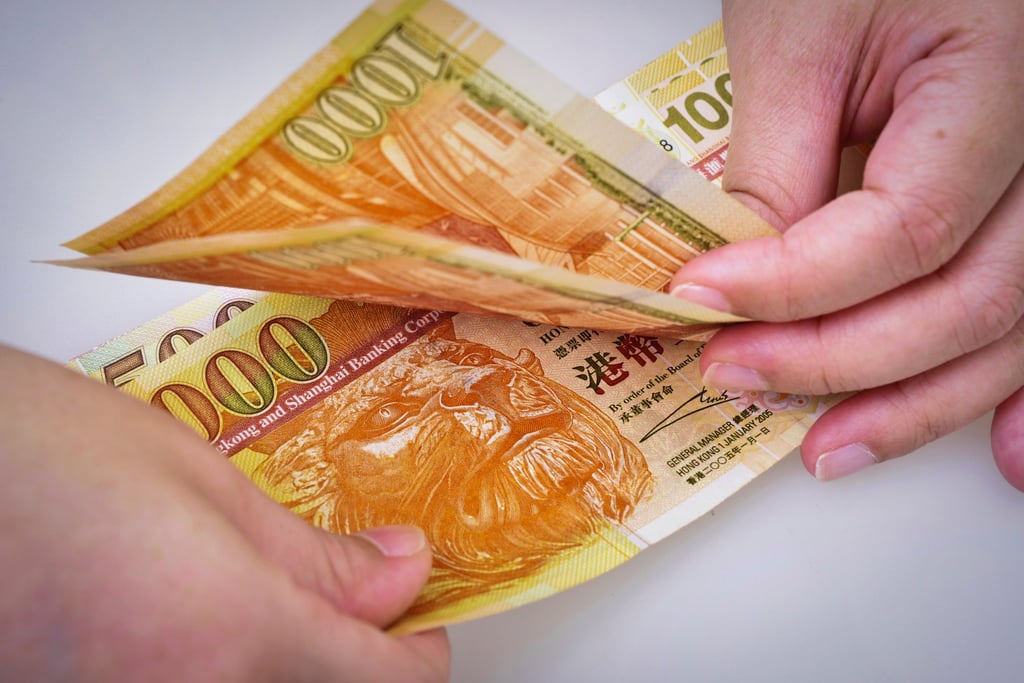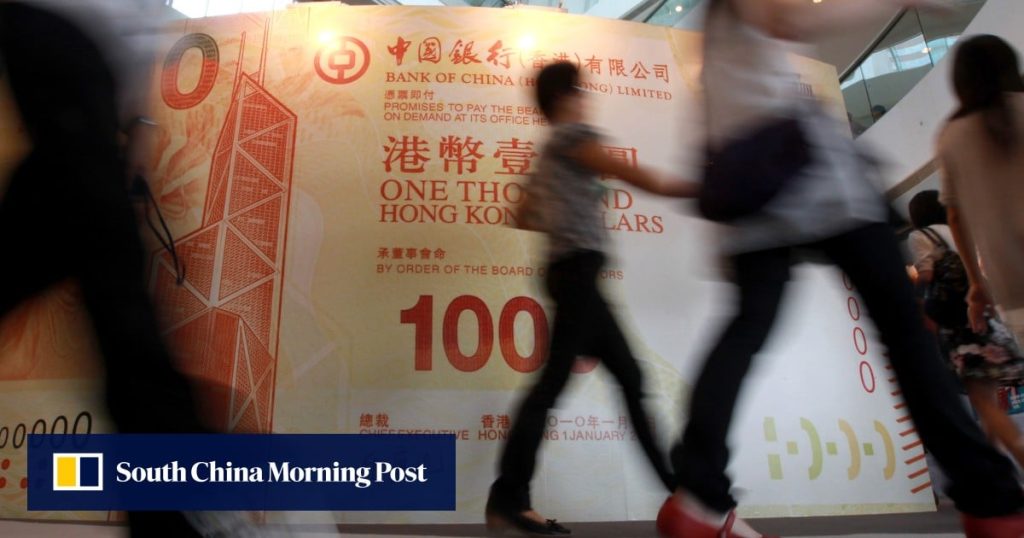The Hong Kong Monetary Authority (HKMA) intervened in the foreign exchange market overnight for the 11th time since late June, buying local currency and absorbing interbank liquidity in a move that analysts believe will increase local interest rates and deter carry traders looking to exploit the city’s interest rate differential with the US dollar.
The HKMA said it sold US$900 million and purchased the equivalent of HK$7.07 billion at an exchange rate of HK$7.85 per US dollar during New York trading hours on Tuesday. Since June 26, the HKMA has bought a total of HK$116.57 billion while selling US$14.8 billion.
As a result of these transactions, the aggregate balance – a measure of banking sector liquidity – will decrease by the same amount, settling at HK$57.09 billion on Thursday. The decline brings the liquidity pool below HK$60 billion, a 67 per cent drop from its recent peak of HK$174 billion in May, which was driven by strong capital inflows targeting large-scale initial public offerings.
The HKMA’s interventions had helped reduce market liquidity and discourage carry traders, said Ryan Lam Chun-wang, head of research for Hong Kong at Shanghai Commercial Bank. “Carry trades will gradually decrease as the gap between the US and Hong Kong dollars narrows,” he said.
Hong Kong’s currency has been pegged to the US dollar since 1983, initially setting the rate at HK$7.80 per US dollar. In 2005, the HKMA established a narrow trading band, allowing the Hong Kong dollar to fluctuate between HK$7.75 and HK$7.85.

The capital inflow in May prompted the HKMA to intervene in the currency markets four times, injecting HK$129.4 billion into the aggregate balance to weaken the local currency.


